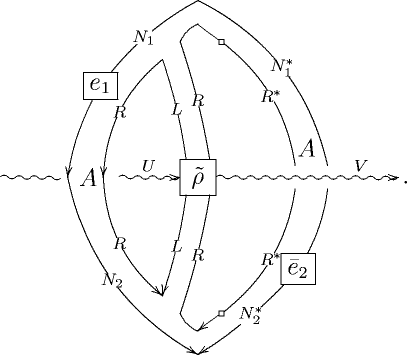Communicating Thoughts on the Web
Posted by Urs Schreiber
In school, I remember, I got very upset when somebody once tried to teach me that no thinking is possible without language. While I think (with or without language?) that this is clearly wrong, it is clearly right that language greatly affects – and good language greatly facilitates – thinking.
Thinking without language is possible, but it is like computing without RAM: it is hard to think a complex thought without the ability of saving big sub-thoughts using a convenient address: a word. Or an equation. Or a diagram. Or a word for an equation or a diagram.
Even with lots of language, thinking just by yourself may be inefficient. Many a thought wants to be communicated and recycled once or twice until reaches a desireable form. At least for me, a blog like the one we are running here is a means to greatly increase the potential for thought exchange.
That requires language. And good language. In our business this means: it requires good means to express math on the web. s One of the marvelous things of this blog, for me, is the sophistication its administrator, Jacques Distler, has put and is putting into web-based math technology. I imagine that in a few years using equations and diagrams in electronic communication will be no less unusual than discussion with your colleagues in front of your office’s blackboard. But somebody has to make it real.
And it’s not as trivial as one might wish it were. It’s rather an entire research all in itself. Check out Jacques’s report on a conference Evolution of Mathematical Communication, where he gave a talk on on Blogging with MathML.
MathML is the communication protocol for electronic mathematical expressions that is at work behind the scenes when we transmit thoughts like
in -Café-communication.
Interestingly, as Jacques mentioned in his talk, the discussion that is archived on the three blogs hosted by him, his own Musings, as well as the (now somewhat dormant) String Coffee Table and the -Category Café here, now constitutes one of the largest collections of MathML on the web.
While I find nothing more convenient than being able to include proper LaTeX in everything I write here, with the output seamlessly embedded into everything else, there are still some technological hurdles that want eventually to be removed.
One is on the server side. The reason that there are so few weblogs with full WebTeX/MathML support like here becomes quite apparent once you follow Jacques’ frequent accounts on what kinds of problems he had to solve to make it work.
As a result, other scientific blogs, whose owners feel the desire of transmitting a formula over the web once in a while, try to resort to solutions like mimeTeX, as for instance Clifford Johnson over at Asymptotia did now.
It’s not at me to discuss the pros and cons of these different solutions in detail. All I’ll notice here is that most solutions I know so far have the one big drawback that they are restricted to a fixed subset of LaTeX. They won’t allow you to load your own packages. In particular, this means: little support for diagrams.
But, in this respect, mimeTeX has at least a slight advantage: it does allow picture environments. While not the same as things like xypic, this does allow to communicate thoughts of this form
by typing the relevant LaTex directly (more or less) inline with the surrounding text. See the mimeTeX site for how to do this, if you want to use it here.
Of course there is always the, in a way, most primitive option: simply compile your LaTeX on your own machine as usual, convert it to a pdf and link to that. As John remarked recently (I cannot find the comment right now) this is, while by itself perfectly fine, for some funny psychological reason not as vivid a communication technique as having the LaTeX output directly on the web page.
To get that, of course, you can always turn the LaTeX output into gif and include that directly using the img tag.
To see the difference, notice that the following example will inevitably attract your attention, while you will probably have ignored this diagram - and its explanation - when I first linked to the pdf it appeared in #
You can do all this gif-conversion by hand, if you know how to. But there is also a little script freely available online, which facilitates and automates the task a little: TeX to GIF.
Posted at December 13, 2006 8:43 AM UTC

Diagrams
Given the ability to create pictures using any number of different programs (and then include them in your pages), I’m not sure that XYpic is the most attractive solution.
As you know, I’ve been using SVG figures on my blog for a long time. I happen to use Adobe Illustrator, but you might want to try InkScape. One of the many good things about SVG (unlike GIFs) is that, if worst comes to worst, you can edit them in a text editor. All of the figures on Sam Ruby’s blog are created in a text editor.
In Minneapolis, Roger Sidje claimed that Firefox either does, or would soon, support
svg:foreignObject, which means that we could directly embed MathML in SVG (in XHTML). That would make for some really cool possibilities.In the meantime, you might want to check out InkScape.